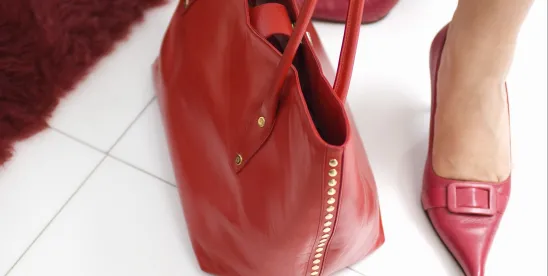Recently, United States District Judge James Donato dismissed an antitrust class action lawsuit against Hermès, holding that although Hermès may reserve the Birkin bag for its highest-paying customers, “that in itself is not an antitrust violation.”
The Birkin and Kelly handbags from Hermès are perhaps the most coveted handbags. Named after the late actress and singer Jane Birkin and the late Grace Kelly, Princess of Monaco, these handbags are not only expensive, but extremely difficult to purchase. Birkin bags and Kelly bags are not available for purchase online; they are sold exclusively in Hermès retail stores. However, according to the lawsuit, Hermès has implemented a policy whereby Birkin and Kelly bags are only offered to customers with a well-established purchase history with Hermès. Allegedly, only once a customer has purchased enough “ancillary products” from Hermès – such as shoes, scarves, belts, jewelry, and home goods – will the customer qualify for the opportunity to purchase a Birkin or Kelly bag.
Thus, in the lawsuit, Plaintiffs alleged that Hermès has implemented an unlawful tying arrangement in violation of antitrust laws. Tying occurs when a seller conditions the sale of one product (the tying product – here, Birkin and Kelly bags) on the buyer’s purchase of a second product (the tied product – here, other Hermès products). Tying arrangements are forbidden under antitrust laws on the theory that, if the seller has market power over the tying product, the seller can leverage this market power through tying arrangements to exclude sellers of the tied product. Generally, to establish that a tying arrangement violates antitrust laws, a plaintiff must prove: (1) that the defendant tied together the sale of two distinct products or services; (2) that the defendant possesses enough economic power in the tying product market to coerce its customers into purchasing the tied product; and (3) that the tying arrangement affects a not insubstantial volume of commerce in the tied product market.
In its motion to dismiss Plaintiffs’ Second Amended Complaint (Plaintiffs had already amended their complaint twice in response to Hermès’ prior motions to dismiss), Hermès pointed out that Plaintiffs failed to plead a viable tying market. In their original complaint, Plaintiffs alleged a single-brand market limited to Hermès handbags – implying that Hermès had no competitors at all. However, after receiving Hermès’ first motion to dismiss, Plaintiffs alleged that Hermès handbags are within the “luxury handbag” market in which Hermès competes with “elite designer and luxury brands like Gucci, Prada, and Louis Vuitton.” After the Court rejected that purported tying market, Plaintiffs’ Second Amended Complaint alleged that Hermès competes in the market for “elitist luxury handbags,” which are limited to Hermès, Chanel, and Bottega Veneta. The Court agreed with Hermès, finding that this was not a “cognizable tying market.” The Court also found that the Second Amended Complaint failed to adequately allege that Hermès possessed sufficient market power in this so-called “elitist luxury handbag market.”
In its motion, Hermès also pointed out that Plaintiffs had failed to define a viable tied product market in which the alleged competitive effects of Hermès’ tying arrangement could be assessed. In their Second Amended Complaint, Plaintiffs grouped a host of disparate products together in a single “Ancillary Products” market, which they described as “the market for luxury ready-to-wear apparel and accessories.” However, as Hermès argued in its motion, Plaintiffs’ definition of the purported tied product market could not sustain an antitrust claim because the varying “Ancillary Products” are not “economic substitutes” for one another. In other words, a scarf or hat is not interchangeable with, or an economic substitute for, the other “Ancillary Products” in the tied product market, such as jewelry and dishware. Again, the Court agreed with Hermès, finding that the tied product market alleged by Plaintiffs was a “kaleidoscope” of products, including scarves, clothing, footwear, watches, jewelry, fragrances, accessories (such as hats, gloves, and sunglasses), and home goods (such as tableware, furniture, and blankets). The Court held that the Second Amended Complaint was “bereft of any facts that might support lumping such a hugely diverse array of non-substitutable products into a single market.”
Antitrust laws are designed to protect competition. Notably, during one of the case management conferences in this matter, Judge Donato aptly noted that Plaintiffs had not adequately alleged or explained how competition was being harmed and Judge Donato even suggested that Hermès’ business model might be pro-competitive because anyone who does not want to buy the ancillary Hermès products in order to purchase a Birkin or Kelly bag can simply purchase a luxury designer bag from Chanel or Bottega Veneta.
As a result of Judge Donato’s most recent order, the case was finally dismissed with prejudice. However, Plaintiffs have since filed a notice of appeal to the Ninth Circuit Court of Appeals.
Images are for reference only.Images and contents gathered automatic from google or 3rd party sources.All rights on the images and contents are with their legal original owners.

